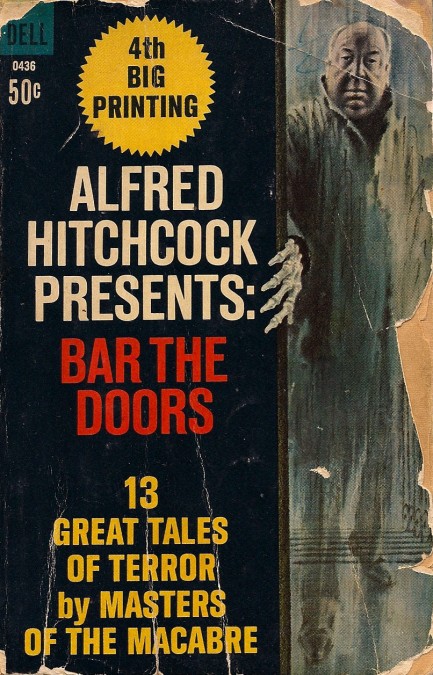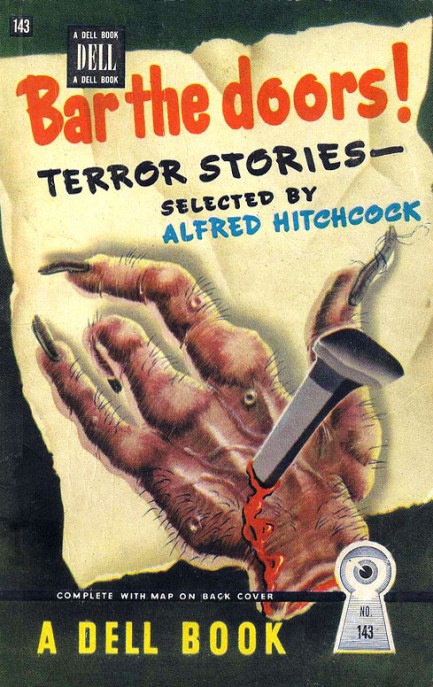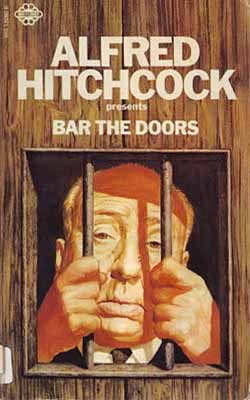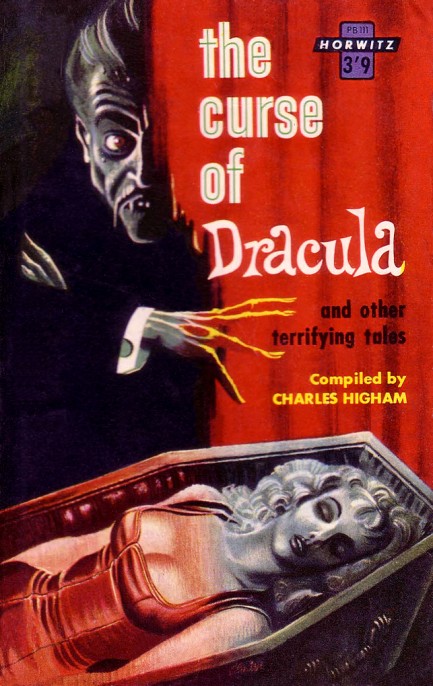| Vintage Pulp | Jul 23 2013 |


Alfred Hitchcock Presents: Bar the Doors contains some of the best macabre fiction we’ve ever read. The collection begins with H.G. Wells’ violent, oppressive tale of murder and voodoo in Sierra Leone “Pollock and the Porroh Man.” The story was written in 1895 and comes with the sort of classical styling you might expect, but with a surprisingly modern pacing as the first paragraph finds the lead character caught in the middle of a stabbing. Pollock pulls a gun to defend himself and the Porroh Man flees, but not before casting an infuriated gaze back that promises revenge. Little does Pollock know that revenge can take supernatural form. You’d expect the tale to be laced with racism, and it is—this line from the first paragraph is simply amazing: “At any rate, the Porroh Man stabbed the woman through the heart as though he had been a mere low class Italian.” African characters fare far worse. However in this context of mortal struggle between a voodoo conjurer and a self-entitled Englishman, racism comes off as impotence against overwhelming powers.

 “Pollock and the Porroh Man” was written four years before Joseph Conrad’s “Heart of Darkness.” Conrad’s work is a novella-length masterpiece, whereas Wells’ story is under ten pages, but Wells is quite successful at exploring a different heart of darkness by bringing to life the deepest colonial fear, the one chortling, brandy-swilling men laugh at as long as they’re in a well lit room bolstered by their own numbers—the fear that munitions and cruelty will suffice to maintain control only insofar as natives aren’t pushed too far. But when that day comes, when native peoples have had enough, then colonials will find that voodoo and magic are real, that technology is truly the illusion, and bloody payment is due for crimes committed against people that wanted only to be left alone.
“Pollock and the Porroh Man” was written four years before Joseph Conrad’s “Heart of Darkness.” Conrad’s work is a novella-length masterpiece, whereas Wells’ story is under ten pages, but Wells is quite successful at exploring a different heart of darkness by bringing to life the deepest colonial fear, the one chortling, brandy-swilling men laugh at as long as they’re in a well lit room bolstered by their own numbers—the fear that munitions and cruelty will suffice to maintain control only insofar as natives aren’t pushed too far. But when that day comes, when native peoples have had enough, then colonials will find that voodoo and magic are real, that technology is truly the illusion, and bloody payment is due for crimes committed against people that wanted only to be left alone.| Vintage Pulp | Nov 30 2012 |


Above is an absolutely vibrant cover for Charles Higham’s vampire anthology The Curse of Dracula and Other Terrifying Tales, published by the Aussie imprint Horwitz in 1962. Inside you get six stories by Theophile Gautier, H.T.W. Bousfield, Ambrose Bierce, E. Nesbit, Honoré de Balzac, and that one guy, er, what’s his name? Ah! Bram Stoker. The cover artist was Frank Benier, who was Australian by birth but Basque by ancestry and saw his first piece published when he was but fourteen. Apparently, he was primarily a cartoonist, but this is a top tier pulp painting he’s put together here. Hopefully we’ll run across more of his work down the line.
| Vintage Pulp | Oct 20 2012 |






































































